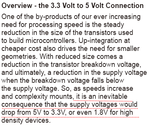wp100
Advanced Member level 6
- Joined
- May 15, 2009
- Messages
- 3,051
- Helped
- 884
- Reputation
- 1,783
- Reaction score
- 733
- Trophy points
- 113
- Location
- Prime Meridian
- Activity points
- 0
Hi,
The problem is finding a calibrated and certified reference humidity meter to compare the SHT11 against.
I do not know of any readily available but expect they are around in commercial and college use.
Depends what your exact task is and the parts used.
With respect to the USB ports power suply, well thats just my limited opinion of using USB ports as a power source.
There are cleary loads of PC equipnemt running fine on usb.
Think there are many more experienced member / engineers in this forum who can give a better more qualified answer your point.
Perhaps start on new post on just that point.
If you are wanting an ideal power source for critical test measurements then use battery power.
what I want is an idea of how accurate the sensor is comparing to what is advertised.
The problem is finding a calibrated and certified reference humidity meter to compare the SHT11 against.
I do not know of any readily available but expect they are around in commercial and college use.
And I'd like to hear your opinion on how to determine/select the work voltage of any task.
Depends what your exact task is and the parts used.
With respect to the USB ports power suply, well thats just my limited opinion of using USB ports as a power source.
There are cleary loads of PC equipnemt running fine on usb.
Think there are many more experienced member / engineers in this forum who can give a better more qualified answer your point.
Perhaps start on new post on just that point.
If you are wanting an ideal power source for critical test measurements then use battery power.
